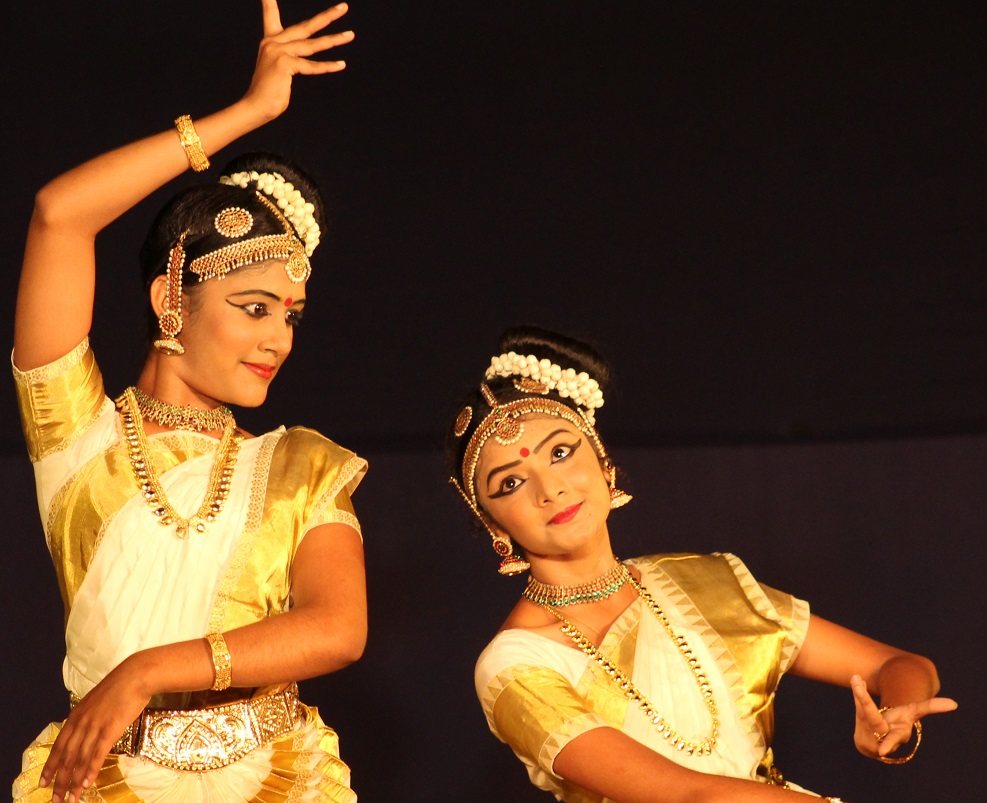Mayoora pada follows the foot work of a peacock and trains the dancer to be as emotive as the fanned-out feathers of the bird
It is truly remarkable how the humans are inspired from nature and their surroundings. We learnt in our earlier articles about the usage of different padas in Mohiniyattam. These padas or footwork form the foundation and grammar of the dance form – for instance, the gracious swan movement or the Hamsa Pada and the movement of the common rooster or the Kukkuda Pada. In this article, we will study the footwork of the peacock in Mayoora Pada.
Mayoora pada: Many eyes, many emotions
Beautiful movements of peacock have inspired several art forms including Mohiniyattam. The Mayoora pada foot work involves standing in a position where only the front of the feet and toes touch the ground and brisk movements to the sides. This foot work belongs to the rhythmic group that has chollus (jathi-like syllables) or bol-like ja-ga-ja-ga-jum-dhi-tha. The beautiful and graceful movement of a peacock is an inspiration for the Mohiniyattam dancer to use lasya or grace in their dance, which follows the Kaisiki Vrithi (sourced from Sama Veda and focuses on abhinaya) or the female dance tradition.
Peacock also represents beauty and dance of the nature. In the Dravidian tradition, a dancer is expected to excel in music, dance and beauty. When the peacock fans out its multi-coloured feathers, they appear like many eyes on its body. Similarly a dancer is expected to convert the whole of his/her body into expressive eyes to convey emotions.
Dancers were called ‘virali‘ in Sangam poetry. One of the meanings of the word ‘viral’ in Tamil is bhava or mood. Thus, it denotes the emotive expressions. The name viralis for dancers thus denotes their ability to beautifully express human emotions.
The realistic acting
In the ancient poem Silapathikaram, a dancer is mentioned as the one who can use her whole body just like expressive eyes to convey the emotions deep in her heart.
Such dancers and actors acting become a natural process. For example, when they emote anger, their face turns red. When they express pathos, tears appear naturally in their eyes. Until recently there was an acting school in Kodungallur that trained actors/dancers in such techniques. This training school existed with the patronage of the Kodungallur royal family.
The acting process developed in the school were so natural that some of the exponents acted death on stage with such realism that audience often mistook that the actor did really pass on right in front of their eyes. Enactment of the scenes from Narasimha avatar, the half lion half human incarnation of Lord Vishnu, were taught in great detail in this school. Kulashekhara Perumal, the king who belonged to this royal family fostered many female dance traditions. He also maintained an acting laboratory in his palace. The lineage of this family who later moved to Thiruvananthapuram were great patrons of music and dance. Balarama Varma who wrote Balarama Bharatham and Swathi Thirunal who revived Mohiniyattam were part of this lineage.
The legacy of female dance artistes
The female dance traditions of Kerala were greatly inspired and fostered during these periods. A continuous legacy of female dance traditions existed from the Sangam periods all the way until the 19th century. This legacy would have inspired many artists to develop the acting techniques of viralis and use it in their performances.
Irrespective of the theatre and dance form, many actors from Kathakali, Koodiyattam and other traditions were trained in the Kodungallur School until the 19th century. One of the last artists who honed his acting skills in this school is Ammannur Madhava Chakyar. That was why many decades ago, I decided to take advanced training in acting from him to enrich Mohiniyattam.
Photo Courtesy: Natanakairali Archives
(Assisted by Sreekanth Janardhanan)
Click here to read more articles from Nirmala Paniker

